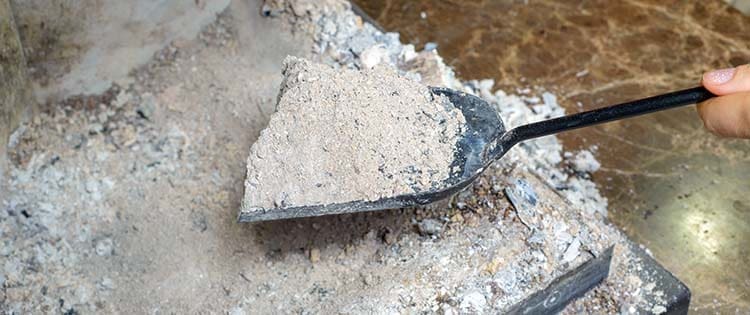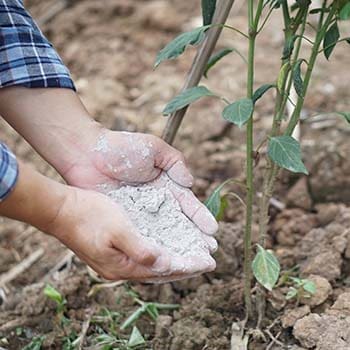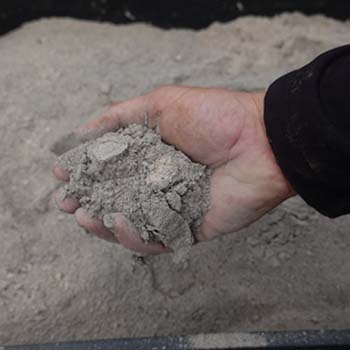Some people make a habit of cleaning out wood ash from their fireplaces and their fire pits and throwing it away. This blows my mind; wood ash is so useful in day-to-day life.
Are you raising your brows yet? Think I’ve lost my mind? Join me for a journey into wood ash and just how neat it is. Let’s get started.
Soap Making
Making fresh lye is probably the number one thing you think of when it comes to wood ash and, if so, you’d be right. People didn’t pay thousands of dollars a year for fancy soaps and shampoos when money was tight. No, they soaked wood ashes in cheesecloth until they made lye, then used that lye to make a very harsh soap that kept them clean.
While I personally can’t use lye due to skin sensitivity, many people can and we strongly recommend giving this a shot. There are thousands of recipes online, so we won’t cover them here. However, we will in future articles, so stay tuned.
Mouse Busting
If you live in an old farmhouse, you know as well as I do that mice are just a part of life. They chew a hole up through the floors, get in, run around, and cause havoc. It’s extremely annoying and unsanitary, and all of us wish the little buggers would just go somewhere outside where they’re supposed to be.
Wood ash can help you on that front. Discover their typical nightly paths and sprinkle a large amount of wood ash down along it for a foot or two. This ash will completely destroy any scent the mice have left for one another and confuse them, often encouraging them to go elsewhere. Many homes simply stuff cooled wood ash down into any visible mouse holes in their homes and then caulk them up. While mice can eat through caulk (and will), coming into contact with wood ash tends to stop them from wanting to do so.
Compost and Gardening
Wood ash is a wonderful brown material to add to your compost. Do so in small quantities any time of the year, or to balance a large green load going in at the end of fall or in early spring.
The addition of wood ash spread over a vetched field (or any field with standing fertilizer/green fertilizer) will help balance it for faster planting in spring, too.
The one thing we have to warn you about with wood ash in composting and gardening is that you can have too much of it. The nitrogen cycle will be thrown off balance and your soil will become quite acidic very fast if you’re not careful. If you’re uncertain what the balance of your cycle already is, go ahead and use a testing kit to discern this before you dump a large load of wood ashes on top of everything else and start mixing it in. That, or be ready to balance it out with a significant amount of green material, which may be costly during the winter season. Or difficult to come by.
De-Skunking
Have you or a loved one (including a pet) gotten sprayed by a skunk?
Most of us have dealt with that pungent aroma at least once in our lives. Your gallant author here pressed her nose too deeply into a museum’s skunk oil sample and had it on the end of her nose, as a child, for the next nausea-inducing 48 hours.
Bluntly, it isn’t pleasant and nobody should have to deal with it any longer than they absolutely have to. While wood ash can create lye, as we mentioned up above, that isn’t our concentration here. No, the ashes themselves have a leeching quality that is quite impressive and useful when you or your dog gets skunked.
To properly use them, wet your skunked areas (fur, hair, whatever got the scent sprayed on it) as thoroughly as you can. Smear the wood ashes into the area and allow them to sit for 5-10 minutes. Rinse them out and reapply if necessary. Though you or your dog will likely smell like a campfire for a brief time, we’d prefer a campfire to a skunk any day of the week. Please also note that we cannot be held responsible if you decide to do this inside. Wood ashes will clog your pipes if used incorrectly (or sometimes even when used correctly), so please be careful.
Ice Melting
Much like salt, wood ash melts ice on your steps and walkways lickety-split. The problem is that you’ll certainly be tracking black footprints everywhere for a bit to come, so you may want to institute a boot-wiping policy at the front door. You’ll also need to wipe off pet paws that run up and down these areas just to keep them from ingesting anything that may hurt their stomachs which may have been hidden in the wood that you burned.
That said, wood ash is a completely free substance that allows you to melt those pesky, dangerous icy steps away just as quickly as salt. Seems like a better option to us.
Bedding Your Winter Fires
Most fires have three layers; actively burning substrate (typically wood), coals, and, you guessed it, ashes.
Ashes help insulate fires and keep them warm under them so your wood burns longer and stronger. This means that if you bank your fires properly, you won’t have to get up in the middle of the night to add more wood or run out to the wood pile when you inevitably forget to bring more in. And that, more than anything on this list, is one of our top tips for using wood ash.
Do keep in mind that too much ash retained in a firebox will also prevent proper oxygen flow around the fire. It’s a tender balance, but you’ll learn it quickly.
Any other tips and tricks for using up wood ashes throughout the year? We’d love to hear them. Put them in the comments down below and try to stay toasty this winter!
You may also like:
What the Pioneers Stockpiled To Survive Winter (Video)
How To Grow An Endless Supply Of Potatoes












